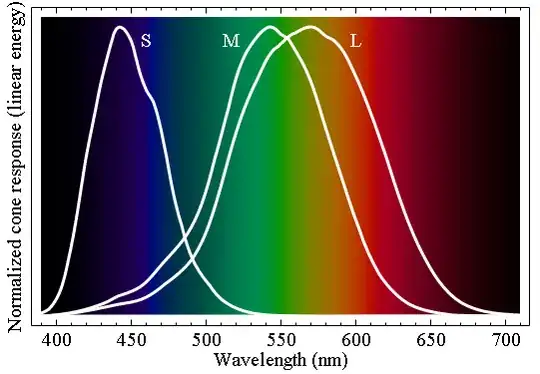Observation:
So, I know that all computer screens are able to project many different colors by varying how they display the RGB (Red, Green, Blue) pixels.
Question
What's the difference between say, yellow light (575 nm) from sunlight vs. the same yellow light that's displayed on the computer screen? Aren't they different? Is our brains mixing together the RGB lights together and its being interpreted as yellow light or is yellow light the same (575 nm) light that comes from sunlight actually hits our eyes?
Relationship between Fourier Series and light?
1) So I know that in Fourier Series, you have basis functions, sines and cosines that make up any other function depending on the coefficients that are in front of the sines and cosines terms.
2) I know that RGB colors on a screen are the "basis" for all the other colors that a computer screen makes up and the intensity of each of the RGB are like the "coefficients". So, am I making the correct relationship here?
 (
(